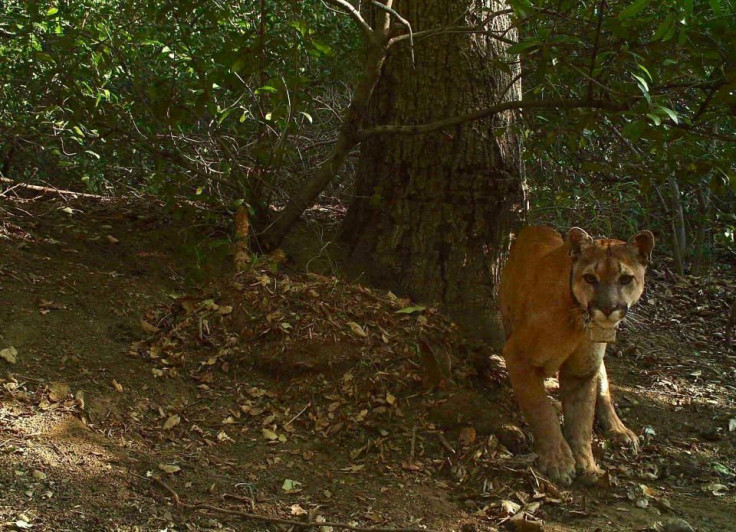Inbred California Pumas Need Help From The Humans Destroying Their Environment

A group of pumas in California have become so small due to human development isolating them from their peers -- and now their forced inbreeding could cause them to die out without human help.
Scientists are calling for a human-led solution to save the felines. They hope to introduce just a few new members to the isolated population that could rescue them by making new genetic material available to breathe new life into the endangered group.
Read: Evolution Killed the Woolly Mammoth in the Most Devastating Way
Researchers reported in the journal Royal Society Open Science that a population of about 20 pumas — also known as mountain lions — in the Santa Ana Mountains in Southern California have such a low level of genetic diversity within their small group that they have become inbred. This is a scenario in which the gene variety is not enough for negative traits to naturally cycle out and leave behind healthy offspring. Their numbers dropped off largely because of urbanization in the Los Angeles and San Diego areas surrounding their environment that has isolated them from other puma groups and put them at risk of being hit by cars or dying in other incidents. For this small community, the busy interstate Highway I-15 keeps them on its west side and cuts them off from other pumas on the east side.
“Migration is essential for maintaining genetic diversity among populations,” the study says. “Further monitoring, and potential human intervention, including minimizing development effects on connectivity, adding or improving freeway crossing structures, or animal translocation, may be needed to ensure adequate gene flow and long-term persistence of the Santa Ana puma population.”
One answer could be getting at least one new member into the mountain lion community. As the researchers point out, it has worked before: A male puma that managed to cross over I-15 and reach the isolated colony then produced almost a dozen cubs and relieved the group. The University of California, Davis, one of the institutions with scientists working on the research, explained that singular male, dubbed M86, “rapidly disseminated unique genes into the inbred population, which reduced the level of inbreeding and significantly increased genetic diversity.”
M86 was hit by a car a few years ago and most of his offspring are either dead or living in captivity. That is par for the course — UC Davis wildlife veterinarian Winston Vickers called it “consistent with mortality rates we found previously in the region.”
But using this previous puma rescuer as a model, scientists have proposed a solution. Another study on the subject, published in the journal PLOS One, used data on the pumas’ movements and DNA to propose a way to make it happen. They suggest expanding the puma conservation area to protect their habitat and making improvements to the nearby roadways that will make it safer for the pumas to cross. This measure would allow for a better exchange of genetic material and thus reduce the inbreeding of the isolated group.
Read: Will Humans Living on Mars Become Inbred?
“Without additional avenues for pumas to move safely between large habitat blocks, these populations will continue to see decreased gene flow, as well as high mortality rates, which will decrease their chances of long-term survival in the region,” lead author Katherine Zeller, a wildlife biologist at the University of Massachusetts-Amherst, said in the UC Davis statement.
Inbreeding in cases similar to this one has contributed to the demise of animals throughout history. The famous woolly mammoth was devastatingly inbred before it went extinct, recent research has shown, with the last of the population in the United States having weak stomachs, no sense of smell, translucent hair and osteoporosis.
© Copyright IBTimes 2024. All rights reserved.





















